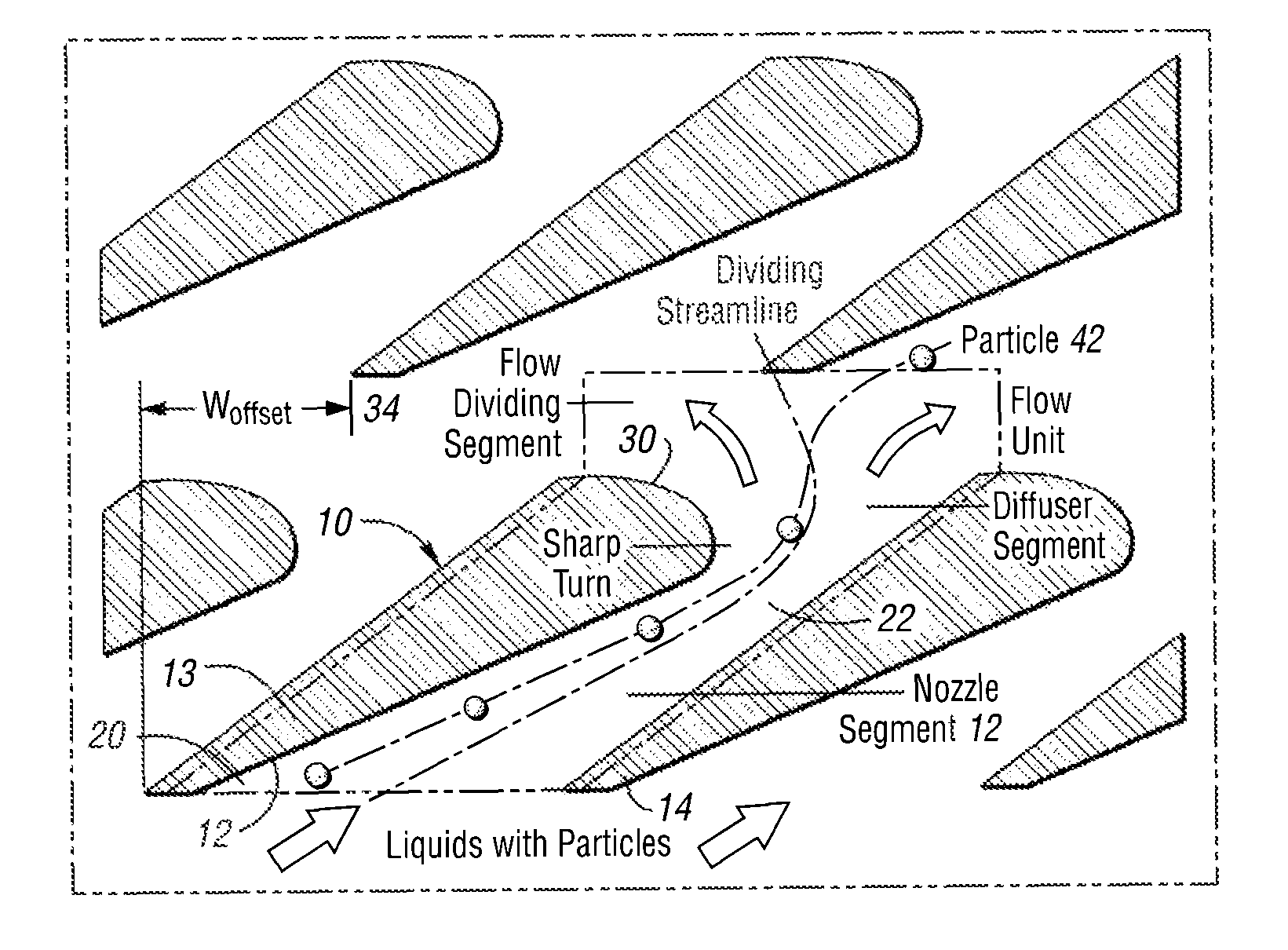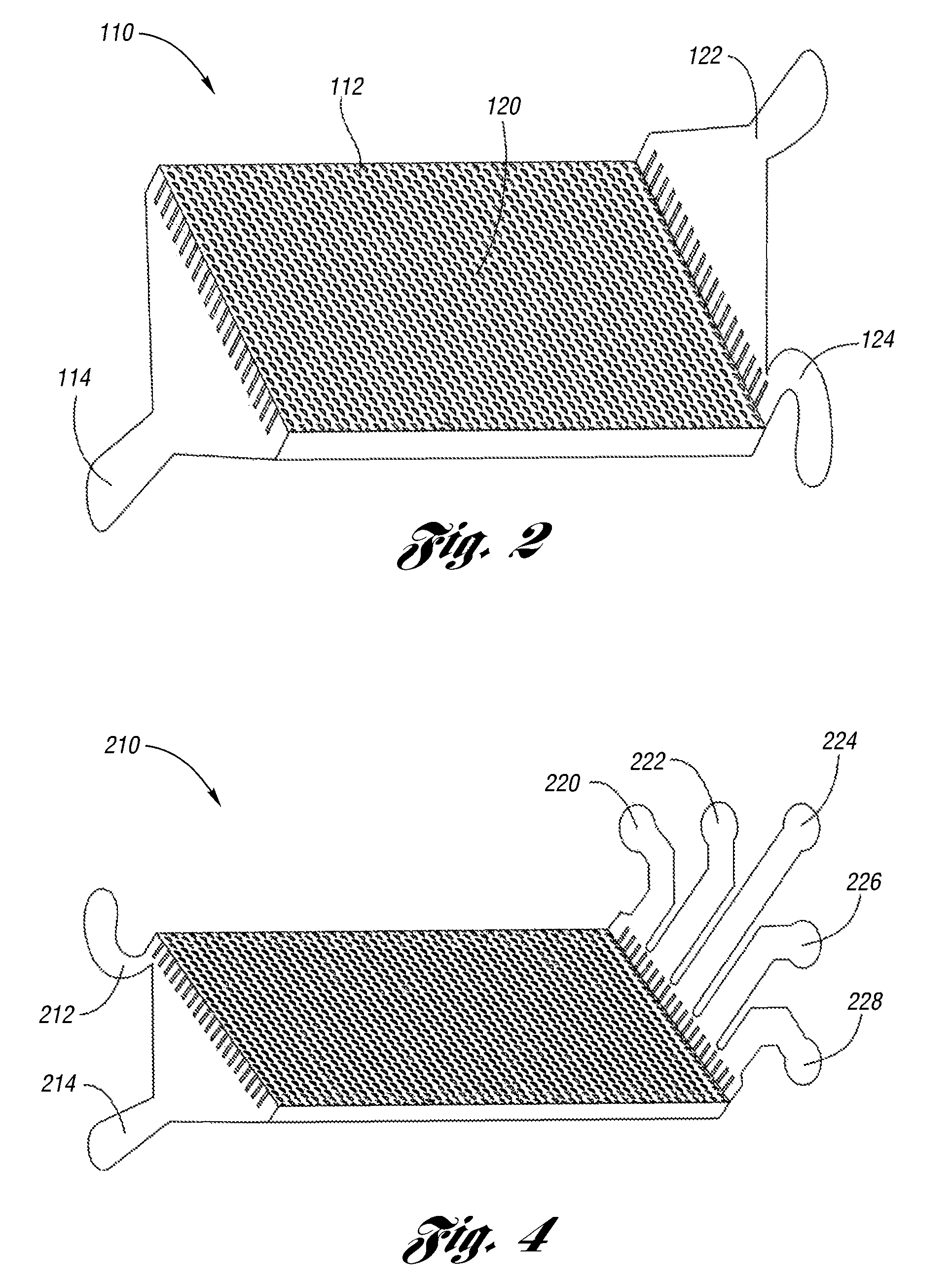Device for separating and concentrating microfluidic particles
a technology of microfluidic particles and injecting devices, which is applied in the direction of separation processes, laboratory glassware, instruments, etc., can solve the problems of inability to implement such methods and apparatus in a miniaturized or micro-sized and automated system, requiring a relatively long separation time, and a relatively complex injecting device. , to achieve the effect of high throughput, cost-effectiveness and small siz
- Summary
- Abstract
- Description
- Claims
- Application Information
AI Technical Summary
Benefits of technology
Problems solved by technology
Method used
Image
Examples
Embodiment Construction
[0021]The present invention generally provides microfluidic devices and methods for particle concentration and separation. Embodiments of the present invention provide microfluidic devices having a continuous processing ability independent of a requirement for the use of external fields. The devices and methods of the present invention are able to separate and concentrate particles by particle size and density. For example, the present invention provides a microfluidic separating and concentrating device comprising a nozzle segment through which fluid and microfluidic particles enter and gain momentum, a turn segment that changes flow direction of the fluid, and a diffuser segment that facilitates separation of the microfluidic particles from the fluid.
[0022]FIGS. 1a and 1b illustrate a flow unit 10 for microfluidic particle separation and concentration in accordance with one embodiment of the present invention. As shown, the flow unit 10 comprises a nozzle segment 12 defined by a f...
PUM
| Property | Measurement | Unit |
|---|---|---|
| densities | aaaaa | aaaaa |
| densities | aaaaa | aaaaa |
| particle sizes | aaaaa | aaaaa |
Abstract
Description
Claims
Application Information
 Login to View More
Login to View More - R&D
- Intellectual Property
- Life Sciences
- Materials
- Tech Scout
- Unparalleled Data Quality
- Higher Quality Content
- 60% Fewer Hallucinations
Browse by: Latest US Patents, China's latest patents, Technical Efficacy Thesaurus, Application Domain, Technology Topic, Popular Technical Reports.
© 2025 PatSnap. All rights reserved.Legal|Privacy policy|Modern Slavery Act Transparency Statement|Sitemap|About US| Contact US: help@patsnap.com



